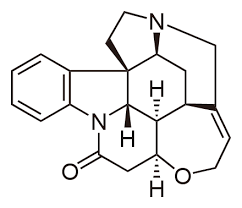oral rat
(mg/kg)
70 kg rat (g)
(g/cm3)

TOXICITIES OF
SUBSTANCES1
in order of increasing toxicity and
TOXICITY EXERCISES
| Compound | Formula | LD502
oral rat (mg/kg) |
LD503
for 70 kg rat (g) |
Density4 (g/cm3) |
| glucose | C6H12O6 | 25,800 | 1,820 | 1.54 |
| saccharin | C7H5NO3S | 14,000 | 980 | 0.83 |
| vitamin C (L-ascorbic acid) | C6H8O6 | 11,900 | 833 | 1.69 |
| ethanol | C2H6O | 7,060 | 494 | 0.79 |
| acetone | C3H6O | 5,800 | 406 | 0.79 |
| methanol5 | CH4O | 5,628 | 3945 | 0.79 |
| 2-propanol | C3H8O | 5,045 | 353 | 0.79 |
| vitamin A (retinol) | C20H30O | 2,000 | 140 | 0.95 |
| acetaminophen (Tylenol)6 | C8H9NO2 | 1,900 | 133 | 1.34 |
| vanillin | C8H8O3 | 1,580 | 111 | 1.06 |
| benzene | C6H6 | 930 | 65 | 0.88 |
| ibuprofen6 | C13H18O2 | 636 | 46 | 1.03 |
| morphine | C17H19NO3 | 335 | 23 | |
| acetyl salicylic acid (aspirin)6 | C9H8O4 | 200 | 14 | 1.39 |
| caffeine7 | C8H10N4O2 | 192 | 1367 | 1.23 |
| nicotine | C10H14O2 | 50 | 3.5 | 1.01 |
| arsenic(III) chloride | AsCl3 | 48 | 3.4 | 2.15 |
| vitamin D3 | C27H44O | 42 | 2.9 | 0.96 |
| tetraethyl lead | C8H20Pb | 12 | 0.84 | 1.65 |
| potassium cyanide | KCN | 5 | 0.35 | 1.52 |
| strychnine | C21H22N2O2 | 2.3 | 0.16 | 1.36 |
| coumadin (warfarin) | C19H16O4 | 1.6 | 0.11 | 1.3 |
| mercury(II) chloride | HgCl2 | 1.0 | 0.07 | 5.43 |
| sarin | C4H10F2P | 0.55 | 0.04 | 1.09 |
| plutonium | Pu | 0.3 | 0.02 | 19.9 |
| dioxin | C12H4Cl4O2 | 0.02 | 0.001 | 1.8 |
| polonium-210 | Po | 0.00005 | 0.000003 | 9.4 |
| botulinum toxin (Botox) | 0.000001 | 0.0000007 | ||
1 Most LD50 values were extracted from
https://chem.nlm.nih.gov/chemidplus/chemidlite.jsp. For tables of LD50
values, please visit:
https://en.wikipedia.org/wiki/Median_lethal_dose and/or
https://ntp.niehs.nih.gov/iccvam/docs/acutetox_docs/guidance0801/appa.pdf .
Toxicity exericises were derived from:
http://murov.info/EM-TOC.htm
and
http://www.cengage.com/c/experiments-in-general-chemistry-6e-murov/9781285458540
.
2 The LD50 (Oral-rat) values represent the number of mg/kg of body
weight that will kill half of the rats that orally consume the amount
given. One source used was:
https://chem.nlm.nih.gov/chemidplus/chemidlite.jsp
3 The applications of these values to a 70 kg human is subject to
question and can result in misleading and inaccurate conclusions.
However, this toxicity data is the most widely and generally available
information.
4 Densities are included to demonstrate that most of the substances have
densities near 1 g/cm3. Reference to the image of 1 gm of sugar should
yield a very rough idea of the toxic amount of the substance.
5 0.2 g of methanol can cause blindness.
6 Typical tablets of Tylenol, ibuprofen and aspirin contain a few
hundred milligrams of substance, substantially below the LD50 values of
133 to 14 grams.
7 A typical cup of coffee contains about 0.1 g of caffeine and a glass
of cola about 0.05 g
The availability of the Internet has made it relatively quick and easy to
obtain toxicological information about chemicals. When working with chemicals,
it is helpful to have some idea of the relative toxicities of the chemicals. In
the case of high toxicity, special precautions may be necessary. Because it is
generally not possible to obtain toxicological data for humans (except as a
result of
terrible accidents), most existing toxicological data has been obtained from the
study of rodents. The LD50 (Oral-rat) values represent the number of
milligrams per kilogram of body weight that will kill half of the rats that
orally consume the amount given. The applications of these values to humans is
certainly arguable and undoubtedly sometimes leads to incorrect conclusions. The LD50 (Oral-rat) values
are often included in
MSDS (Material Safety Data Sheet) and there are many sites on the Internet that
can locate MSDS. Listings of MSDS sites can be found at:
http://murov.info/orgsolvents.htm
. If you are using an MSDS listing, scroll down to the toxicological
heading (usually #11, the second one after physical properties which is another
very useful section of the MSDS) which is about 3/4 of the way through the MSDS
and look for LD50 (Oral-rat)
values.
Other options are to type in the name of the chemical followed by msds in the
Google search box or the name of the chemical followed by LD50 at
http://www.wolframalpha.com/ .
Probably the quickest
way to locate the desired information is to use the Chemidplus site
https://chem.nlm.nih.gov/chemidplus/chemidlite.jsp .
1. a. The average cup of coffee contains about 100 mg of caffeine. How many
cups of coffee could potentially be lethal to half of the drinkers? (Note:
The LD50 value for rats is the same as the LDLO for humans.
Unexpected and unusual coincidences should be viewed with suspicion and it is
possible that one of the values was incorrectly recorded. There are many errors
in LD50 tabulations presumably because lists have been compiled by non-chemists
and differences in labels and chemical names have not been adequately noticed.)
b. Recognizing that the answer to #1a depends on many assumptions and has a
large margin of error, is the very sad and unfortunate story reported at the
site below surprising?
http://the-tech.mit.edu/V118/N56/shorts.56n.html
http://www.solarnavigator.net/solar_cola/caffeine.htm
2. Assume that a typical glass of beer contains 6% ethyl alcohol and 350 mL. How
many beers could potentially be lethal to half of the drinkers?
3. The average cigarette contains about 20 mg of nicotine and the smoking of one
cigarette results in the absorption of about 1 mg of nicotine in the
bloodstream. To a 70 kg human, how many cigarettes could be lethal if consumed
and how many if smoked?

a. Does this sound like a wise procedure?
b. During these episodes, the media often describes the use of "iodine" as
therapy. Explain the problem with this announcement.
c. The iodine LDLO value for a human is 28 mg/kg but the LD50 value for rats
is listed as 14 g/kg. Halogens are considered to be very toxic
but the LD50 value for rats seems to indicate a low toxicity. Critically
ev
5. Would you consider vanillin to be a safe food additive? Explain your answer.
6. Hetch Hetchy reservoir in the Sierra Nevada Mountains near Yosemite was
formed when the O'Shaughnessy Dam was completed in 1923 on the Tuolomne River to
provide a water source and storage for San Francisco. The reservoir holds
360,000 acre feet of water. An acre ft. = 1.23x106 L. Terrorist threats are in
the news today on a daily basis and one of the many concerns is that our water
sup
a. To determine whether this is feasible, calculate the amount of potassium
cyanide that would have to be dumped into Hetch Hetchy to kill half of the
people who drink 230 grams (about 8 oz.) of the water. Assume the density of the
reservoir contents is 1.0 g/mL.
b. Do you think it would be possible to dump the amount calculated above into
the reservoir without being detected? Explain your answer.
c. Answer the previous question assuming that dioxin is used instead of
potassium cyanide. Explain your answer.

7. a. The venom of black widows has a rat subcutaneous LD50 of approximately 0.2 mg/kg.
Assuming a density of 1 g/mL, what volume of venom do black widows have to inject to have a 50% chance of killing a human? What are
the many assumptions that go into this calculation? Does the amount intuitively
seem like a reasonable amount for a spider bite? (Note that oral values
are not available but it is claimed that unless a person has an ulcer or
similar, the oral toxicity of spider and snake venoms is low. (See:
http://members.tripod.com/~c_kianwee/rpotent.htm and
http://members.tripod.com/~c_kianwee/venom3.htm. For snake values,
see:
http://snakedatabase.org/pages/LD50.php ,
http://www.seanthomas.net/oldsite/ld50tot.html ).

8. Warfarin (also called coumadin) is a commonly used prescription drug used to thin blood. A person on coumadin, must have frequent blood tests to monitor the coumadin concentration. Does the LD50 of coumadin explain the need for the frequent testing. Explain your answer.

9. Dioxin is a byproduct in some organic syntheses and is produced in small quantities during some of the processes used to bleach paper. Does LD50 justify concern about the use of this chemical. Perform an Internet search on dioxin to determine if there have been any environmental problems caused by dioxin.

10. Strychnine is used as a rat poison. Should it be used carefully? Explain your
answer.

11. Acetaminophen is the active ingredient in “non-aspirin” pain relievers. Extra
strength tablets contain 500 mg of acetaminophen. How many tablets would be
toxic to half the population of 70 kg humans (assuming the rat LD50 values apply
to humans)?
